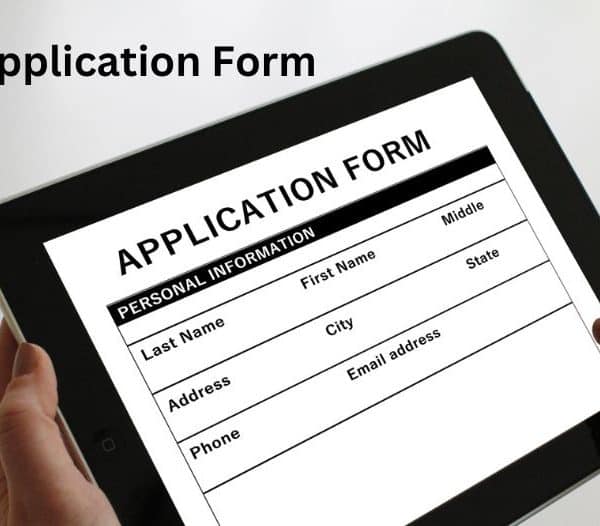1. Consider the following statements:
1. Most of India’s external debt is owed by governmental
entities.
2. All of India’s external debt is nominated in US dollars.
Which of the statements given above is/ arecorrect?
(a) 1 only
(b) 2 only
(c) Both 1 and 2
(d) Neither 1 nor 2
Ans. (d)
Explanation: Commercial borrowings continued to be
the largest component of external debt with a share of
37.4 per cent, followed by NRI deposits (24.1 per cent)
and short-term trade credit (19.9 per cent).
US dollar denominated debt continued to be the largest
component of India‘s external debt with a share of 45.9
percent at end December 2018, followed by the Indian
rupee (24.8 percent), SDR (5.1 percent), yen (4.9 percent)
and euro (3.1 percent)
2. Which of the following is not included in the assets of a
commercial bank in India?
(a) Advances
(b) Deposits
(c) Investments
(d) Money at call and short notice
Ans. (b)
3. In the context of India, which of the following factors
is/ are contributor/ contributors to reducing the risk of a
currency crisis?
1. The foreign currency earnings of India’s IT sector
2. Increasing the government expenditure
3. Remittances from Indians abroad
Select the correct answer using the code given below.
(a) 1 only
(b) 1 and 3 only
(c) 2 only
(d) 1, 2 and 3
Ans. (b)
Explanation:
Option 1 and 3 will bring foreign currency, which will
contribute in reducing the risk of a currency crisis.
Option 2 will not bring foreign currency except if a
foreign company does the work.
4 Consider the following statements:
1. The United Nations Convention against Corruption
(UNCAC) has a ‘Protocol against the Smuggling of
Migrants by Land, Sea and Air’.
2. The UNCAC is the ever-first legally binding global
anti-corruption instrument
3. A highlight of the United Nations Convention against
Transnational Organized Crime (UNTOC) is the
inclusion of a specific chapter aimed at returning assets
to their rightful owners from whom they had been taken
illicitly.
4. The United Nations Office on Drugs and Crime
(UNODC) is mandated by its member States to assist in
the implementation of both UNCAC and UNTOC.
Which of the statements given above are correct?
(a) 1 and 3 only
(b) 2 and 4 only
(c) 2, 3 and 4 only
(d) 1, 2, 3 and 4
Ans. (c)
The first statement is wrong as it is under the UN
convention against trans-national organized crime. The
United Nations Convention against
Corruption is the only legally binding universal
anti-corruption instrument.
The Convention UNTOC is supplemented by three
Protocols, which target specific areas and manifestations
of organized crime: the Protocol to Prevent, Suppress
and Punish Trafficking in Persons, Especially Women
and Children; the Protocol against the Smuggling of
Migrants by Land, Sea and Air; and the Protocol against
the Illicit Manufacturing of and Trafficking in Firearms,
their Parts and Components and Ammunition. Countries
must become parties to the Convention itself before they
can become parties to any of the Protocols. Statements 2,
3 and 4 are correct.
5. Which of the following is issued by registered foreign
portfolio investors to overseas investors who want to be
part of the Indian stock market without registering
themselves directly?
(a) Certificate of Deposit
(b) Commercial Paper
(c) Promissory Note
(d) Participatory Note
Ans. (d)
Participatory notes also referred to as P-Notes, or PNs,
are financial instruments required by investors or hedge
funds to invest in Indian securities without having to
register with the
Securities and Exchange Board of India (SEBI).
Also Read: UPSC 2011 Economics Questions and Answers : A detailed explanation with Solutions
6. With reference to India’s Five-Year Plans, which of the
following statements is/are correct?
1. From the Second Five-Year Plan, there was a
determined thrust towards substitution of basic and
capital good industries.
2. The Fourth Five-Year Plan adopted the objective of
correcting the earlier trend of increased concentration of
wealth and economic power.
3. In the Fifth Five-Year Plan, for the first time; the
financial sector was included as an integral part of the
Plan.
Select the correct answer using the code given below.
(a) 1 and 2 only
(b) 2 only
(c) 3 only
(d) 1, 2 and 3
Ans. (a)
From the Second Five-Year Plan, to save the valuable
foreign exchange and give a boost to the domestic
industrial sector, the Indian government promoted
import substitution.
The Fourth Five-Year Plan adopted the objective of
correcting the earlier trend of increased concentration of
wealth an economic power.
In 1969 the Indian government nationalised 14 major
private banks; one of the big banks was Bank of India. It
was the first time when the financial sector was included
as an integral part of the plan.
7. With reference to Asian Infrastructure Investment
Bank (AIIB), consider the following statements:
1. AIIB has more than 80 member nations.
2. India is the largest shareholder in AIIB.
3. AIIB does not have any members from outside Asia
Which of the statements given above is/are correct?
(a) 1 only
(b) 2 and 3 only
(c) 1 and 3 only
(d) 1, 2 and 3
Ans. (a)
The Asian Infrastructure Investment Bank (AIIB) is a
multilateral development bank with a mission to improve
social and economic outcomes in Asia. Headquartered in
Beijing, we began operations in January 2016 and have
now grown to 97 approved members worldwide.
Outside Asia Members: Australia, New Zealand.
8. What was the purpose of Inter-Creditor Agreement
signed by Indian banks and financial institutions
recently?
(a) To lessen the Government of India’s perennial burden
of fiscal deficit and current account deficit
(b) To support the infrastructure projects of Central and
State Governments
(c) To act as independent regulator in case of applications
for loans of Rs. 50 crore or more
(d) To aim at faster resolution of stressed assets of Rs. 50
crore or more which are under consortium lending
Ans. (d)
The agreement, known as Inter-Creditor Agreement
(ICA) was framed under the aegis of the Indian Banks’
Association and follows the recommendations of the
Sunil Mehta Committee on stressed asset resolution. ICA
is an agreement among banks that have dues from a
borrower in the stress.
9. The Chairmen of public sector banks are selected by
the
(a) Banks Board Bureau
(b) Reserve Bank of India
(c) Union Ministry of Finance
(d) Management of concerned bank
Ans. (a)
The Chairmen of public sector banks are selected by the
BBB and appointed by the Finance Ministry. On the
recommendation of the BBB, the Appointment
Committee of Cabinet takes the final decision.
10. Consider the following statements:
1. Petroleum and Regulatory Board (PNGRB) is the first
regulatory body set up by the Government of India.
2. One of the tasks of PNGRB is to ensure competitive
markets for gas.
3. Appeals against the decisions of
PNGRB go before the Appellate Tribunals for Electricity.
Which of the statements given above are correct?
(a) 1 and 2 only
(b) 2 and 3 only
(c) 1 and 3 only
(d) 1, 2 and 3
Ans. (b)
TRAI is the first independent regulatory body set up by
the government of India.
Vision of PNGNRB:
“To create a vibrant energy market with rapid and
orderly growth through facilitation of flow of
investments into the basic infrastructure for efficient
transportation and distribution of petroleum, petroleum
products and natural gas at minimum cost and high level
of protection of consumer interests through fair trade
practices and competition amongst the entities so as to
ensure the enhanced competitiveness of Indian economy
and customer satisfaction.” So Statement 2 is correct.
Section 30 (1) of the PGNRB Act: Subject to the
provisions of this Act, the Appellate Tribunal established
under section 110 of the Electricity Act, 2003 (36 of 2003)
shall be the Appellate Tribunal for the purposes of this
Act and the said Appellate Tribunal shall exercise the
jurisdiction, powers and authority conferred on it by or
under this Act. So statement 3 s correct.
11. Which one of the following is not a sub-index of the
World Bank’s ‘Ease of Doing Business Index’?
(a) Maintenance of law and order
(b) Paying taxes
(c) Registering property
(d) Dealing with construction permits
Answer: A
A nation’s ranking on the index is based on the average
of 10 sub indices:
Starting a business – Procedures, time, cost and
minimum capital to open a new business
Dealing with construction permits – Procedures, time
and cost to build warehouse
Getting electricity – procedures, time and cost required
for a business to obtain a permanent electricity
connection for a newly constructed warehouse
Registering property – Procedures, time and cost to
register commercial real estate
Getting credit – Strength of legal rights index, depth of
credit information index
Protecting investors – Indices on the extent of disclosure,
extent of director liability and ease of shareholder suits
Paying taxes – Number of taxes paid, hours per year
spent preparing tax returns and total tax payable as
share of gross profit
Trading across borders – Number of documents, cost and
time necessary to export and import
Enforcing contracts – Procedures, time and cost to
enforce a debt contract
Resolving insolvency – The time, cost and recovery rate
(%) under bankruptcy proceeding
(World Bank Website)
12. Among the agricultural commodities imported by
India, which one of the following accounts for the highest
imports in terms of value in the last five years?
(a) Spices
(b) Fresh fruits
(c) Pulses
(d) Vegetable oils
Ans. (d)
Self-explanatory
13. The Global Competitiveness Report is published by
the
(a) International Monetary Fund
(b) United Nations Conference on Trade and
Development
(c) World Economic Forum
(d) World Bank
Ans. (c)
Explanation:
The Global Competitiveness Report is a yearly report
published by the World Economic Forum Since 2004. It
ranks countries based on the Global Competitiveness
Index.
14. In a given year in India, official poverty lines are
higher in some States than in others because
(a) poverty rates vary from State to State
(b) price levels vary from State to State
(c) Gross State Product varies from State to State
(d) Quality of public distribution varies from State to
State
Ans. (b)
Poverty line depends upon income profile of the
population vis-à-vis cost of standard basket of
consumption. Thus, it is a function of cost of
consumption basket which varies from state to state. It is
not related to GSDP or quality of public distribution
services.
Also Read: GS Environment and Ecology Questions: UPSC IAS prelims 2015
15. Consider the following statements:
1. Coal sector was nationalized by the Government of
India under Indira
Gandhi.
2. Now, coal blocks arc allocated on lottery basis.
3. Till recently, India imported coal to meet the shortages
of domestic supply, but now India is self- sufficient in
coal production.
Which of the statements given above is/are correct?
(a) 1 only
(b) 2 and 3 only
(c) 3 only
(d) 1, 2 and 3
Answer: A
Indira Gandhi nationalised all coal mining blocks in
early 1970s. Right to extract coal from demarcated
blocks is offered on the basis of auction, not lottery.
Despite having large reserves of coal, Indian coal quality
is not very good. Also, the supply lines are not very
efficient and thus many power plants in India import
coal. Eg Indonesia supplies thermal coal to power plants
run by Tatas and Adanis. Thus, India is not self-reliant in
coal production.
16. The money multiplier in an economy increases with
which one of the following?
(a) Increase in the cash reserve ratio
(b) Increase in the banking habit of the population
(c) Increase in the statutory liquidity ratio
(d) Increase in the population of the country
Ans. (b)
In fractional banking system, money multiplier is a key
element. As more people start banking and depositing
money into banks, banks can lend even more. It thus
creates more money in the system.
17. In India,
‘extended producer responsibility’ was
introduced as an important feature in which of the
following?
(a) The Bio-medical Waste (Management and Handling)
Rules, 1998
(b) The Recycled Plastic (Manufacturing and Usage)
Rules, 1999
(c) The e-Waste (Management and Handling) Rules, 2011
(d) The Food Safety and Standard Regulations, 2011
Ans. C
The e-Waste (Management and Handling) Rules, 2011
recognises producers‘ liability for recycling and reducing
e-waste in the country. It introduced “extended producer
responsibility’
, that is, the responsibility of producers of
electronic equipment for effective channelisation of
E-waste to the registered recyclers.
18. The economic cost of food grains to the Food
Corporation of India is Minimum Support Price and
bonus (if any) paid to the farmers plus
(a) transportation cost only
(b) interest cost only
(c) procurement incidentals and distribution cost
(d) procurement incidentals and charges for godowns
Ans. C
The economic cost of food grains procured by the Food
Corporation of India (FCI) is a total of Minimum
Support Price and bonus (if any) paid to the farmers plus
the procurement incidentals and distribution cost. The
economic cost has three main components – procurement
cost, procurement price, and distribution cost. The
procurement incidentals are the initial costs incurred
during procurement of foodgrains. The FCI buys
foodgrains from the farmers at the pre-announced
Minimum Support Price. The distribution costs include
freight, handling charges, storage charges, losses during
trasit and establishment cost.
19. Consider the following statements:
1. Purchasing Power Parity (PPP) exchange rates are
calculated by comparing the prices of the same basket of
goods and services in different countries.
2. In terms of PPP dollars, India is the sixth largest
economy in the world.
Which of the statements given above is/are correct?
(a) 1 only
(b) 2 only
(c) Both 1 and 2
(d) Neither 1 nor 2
Ans. (a)
PPP is an economic theory that compares different
countries’ currencies through a “basket of goods”
approach.
According to this concept, two currencies are in
equilibrium—known as the currencies being at
par—when a basket of goods is priced the same in both
countries, taking into account the exchange rates. Terms
of PPP dollars, India is the third largest economy in the
world.
20. Which one of the following is not the most likely
measure the Government/RBI takes to stop the slide of
Indian rupee?
(a) Curbing imports of non-essential goods and
promoting exports
(b) Encouraging Indian borrowers to issue rupee
denominated Masala
(c) Easing conditions relating to external commercial
borrowing
(d) Following an expansionary monetary policy
Ans. (d)
Expansionary monetary policy is hen a central bank uses
its tools to stimulate the economy.
That increases the Money supply, lowers the interest rate
and increases the aggregate demand. It boost the growth
as measured by
GDP. It lowers the value of the currency, thereby
decreasing the exchange rate.
21. Consider the following statements:
The Reserve Bank of India’s recent directives relating to
‘Storage of Payment System Data’
, popularly known as
data diktat, command the payment system providers that
1. They shall ensure that entire data relating to payment
systems operated by them are stored in a system only in
India
2. They shall ensure that the systems are owned and
operated by public sector enterprises
3. They shall submit the consolidated system audit report
to the Comptroller and Auditor General of India by the
end of the calendar year
Which of the statements given above is/are correct?
(a) 1 only
(b) 1 and 2 only
(c) 3 only
(d) 1, 2 and 3
Answer: A
The RBI has given the following directives relating to
Storage of Payment System Data:
i. All system providers shall ensure that the entire data
relating to payment systems operated by them are stored
in a system only in India. This data should include the
full end-to-end transaction details / information collected
/ carried / processed as part of the message / payment
instruction. For the foreign leg of the transaction, if any,
the data can also be stored in the foreign country, if
required.
ii. System providers shall ensure compliance of (i) above
within a period of six months and report compliance of
the same to the Reserve Bank latest by October 15, 2018.
iii. System providers shall submit the System Audit
Report (SAR) on completion of the requirement at (i)
above. The audit should be conducted by CERT-IN
empaneled auditors certifying completion of activity at
(i) above. The SAR duly approved by the Board of the
system providers should be submitted to the Reserve
Bank not later than December 31, 2018. Thus Option A
gives the right answer.
22. The Service Area Approach was implemented under
the purview of
(a) Integrated Rural Development Programme
(b) Lead Bank Scheme
(c) Mahatma Gandhi National Rural Employment
Guarantee Scheme
(d) National Skill Development Mission
Answer: B
The lead bank scheme was established in 1969 with the
adoption of an area approach for bridging the spatial
and structural credit gaps.
The basic idea was to have an ―area approach‖ for
targeted and focused banking. The banker‘s committee,
headed by S. Nariman, concluded that districts would be
the units for area approach and each district could be
allotted to a particular bank which will perform the role
of a Lead Bank.
Also Read: Economics Questions for UPSC Prelims 2010 : Let’s crack UPSC Exam!







